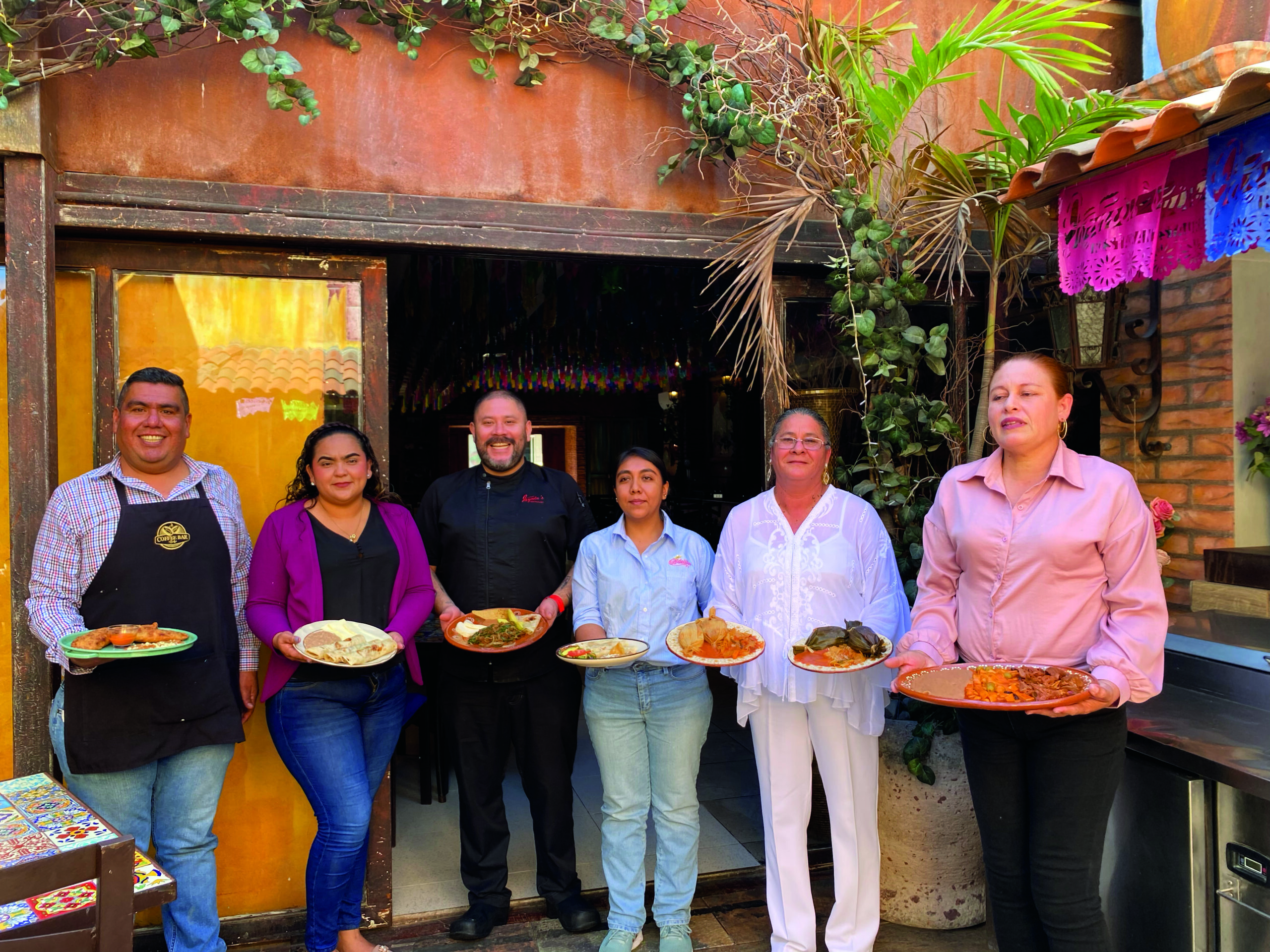|
Getting your Trinity Audio player ready...
|
To better understand what traditional regional food is in this area, you must go to the source, and to achieve this you have to have an inside contact. Fortunately, I know just the right person, Rafael Garcia, of Grupo 24, a young Choyero entrepreneur who was kind enough to arrange a meeting with six cooks to talk about the intricacies of regional Choyero food.
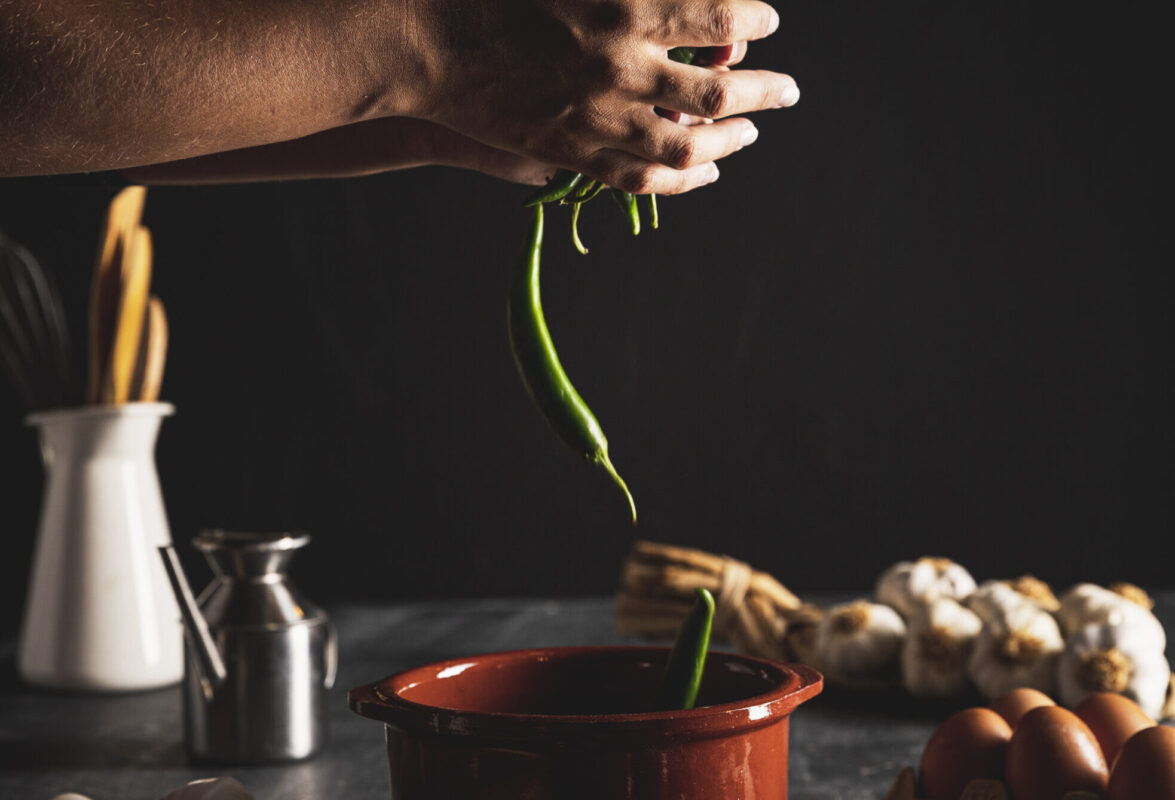
Choyero: a person born and raised in the southern part of the state of Baja California Sur, more specifically one whose family has been in the area for at least two generations and is from the area that encompasses Los Cabos, Miralores, Santiago, and surroundings all the way to La Paz. The word itself means, a person that is from the place where “Choya” cacti abound. This term was traditionally used to identify people from the sierras in BCS.
As we all talked about methods and secrets to prepare their traditional and most favorite dishes, it became clear to me that Choyero food is the food of brave and creative spirits that decided life in this area was promising, before all the development and the comforts we see now were in place, and had the foresight to build their dreams here. It is food that took the harshness of the land and found a way to turn what it offered into simple and tasty dishes. Food that attests to the creativity of the cooks that managed to create a great variety of flavors with somewhat limited resources. Following is a sampling of some of the most representative dishes as they were presented by these incredibly talented regional cooks.
Every cook arrived with a sample of their most popular regional dish and what was going to be an interview became a wonderful conversation surrounded by great food.
Eulises Quintana, of Coffee Bar 54 in San José del Cabo is a second generation Choyero, who loves to cook regional food. He prepared beef empanadas, a perfectly crisp deep-fried turnover filled with knife-minced beef, potato, olives, and raisins, cooked into a thick stew in a mild guajillo pepper sauce. The challenge is to end up with a moist filling wrapped in a soft dough with a crispy exterior and Eulises managed to meet the challenge with ease.
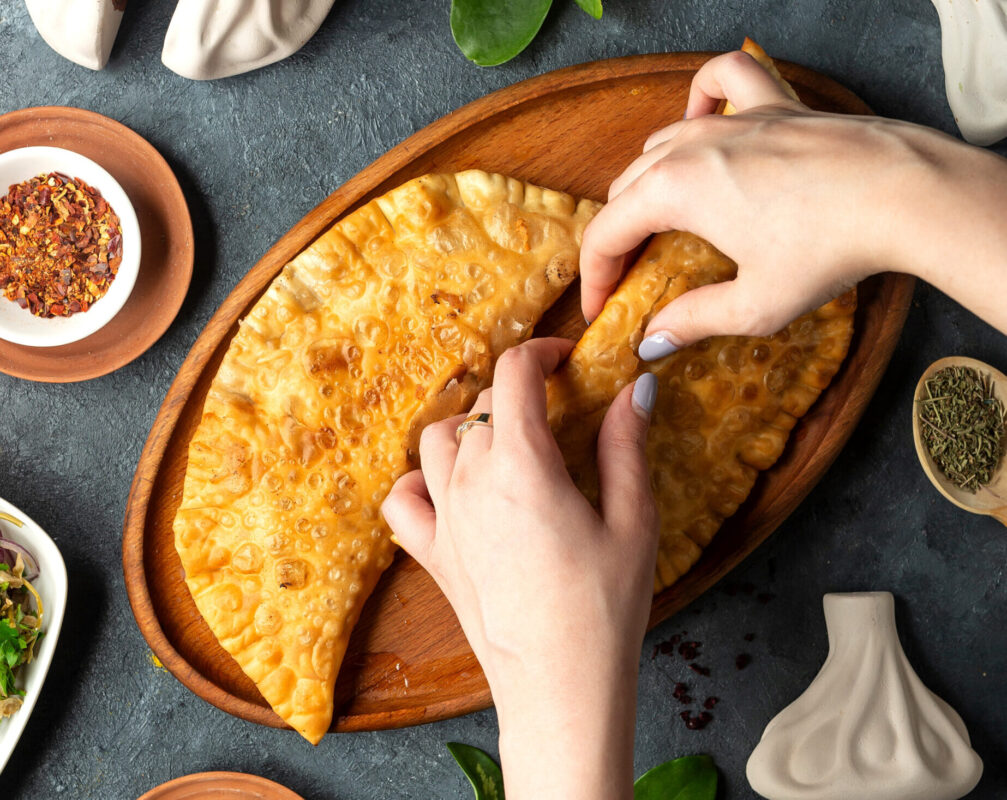
Then came Ana Rosa Ceseña, proud third generation Choyera, who not only cooks traditional regional food to order, but also offers cooking classes for those interested in learning how to prepare the most representative dishes in regional cuisine. Ana Rouse, as she is known in her social networks, prepared pork and sweet potato tamales, wrapped in banana leaves and pork and potato tamales wrapped in corn leaves, all cooked with a wood-fire which imparts a characteristic flavor to all her dishes. When talking about the tamales she explained that the banana leaves make for a moister tamal that slides easily off the wrapper, while corn leaves tamales tend to be a bit drier and sometimes stick to the leaves for a characteristic corn flavor. The tamales of traditional choyero food add olives and raisins to the “masa” which is made with corn dough mixed until fluffy with either lard or shortening.
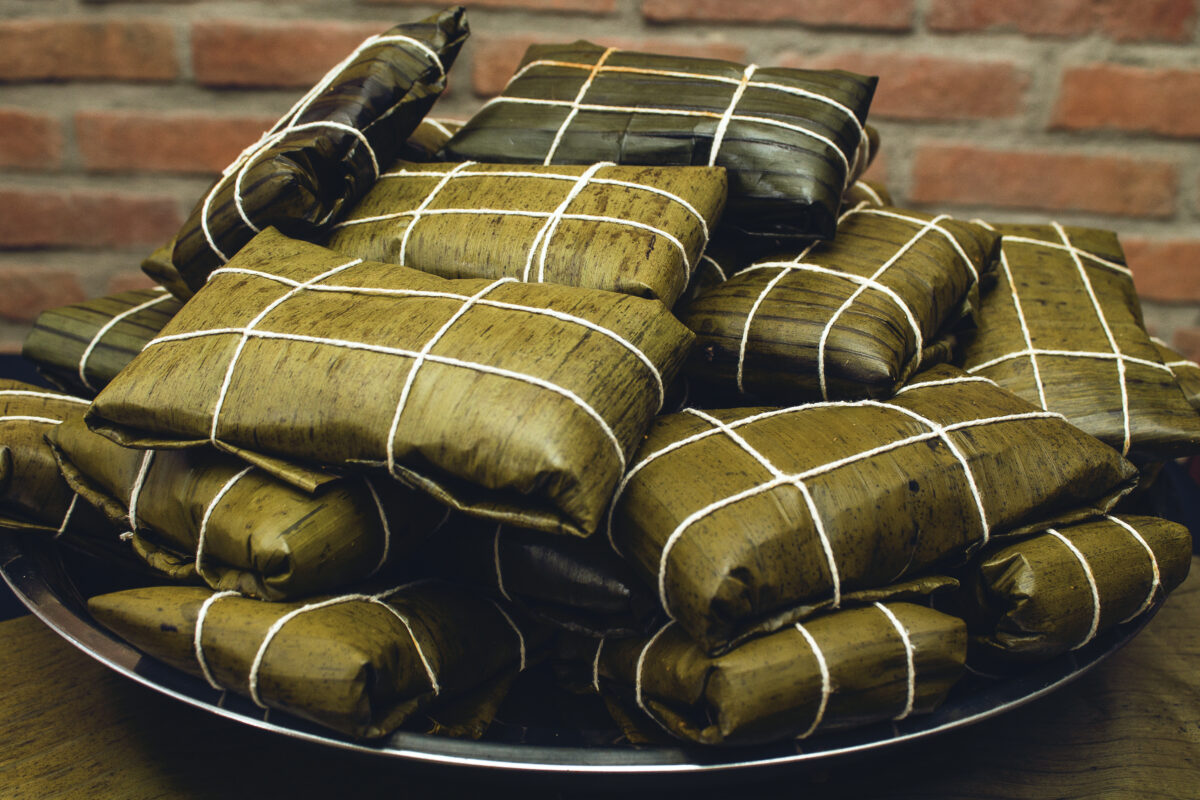
Yajaira Marquez, who introduced herself as a 100% Choyera from Miraflores, prepared Machaca burritos and these were no ordinary burritos. The tortillas were handmade flour tortillas, thick, soft and fluffy, the kind that can be eaten on their own and leave you feeling happy and satisfied. The machaca, which is an important element of choyero food, was also prepared the traditional way, with beef that was seasoned, sun dried, grilled and then minced. The name “machaca” comes from the verb “machacar” which means to pound, crush or grind. Yajaira mentioned that now it is common to take the meat to a mill to shred, but traditionally it was minced on a stone with a cleaver-like knife called a “machete”. The machaca is then cooked with onion, serrano peppers and potatoes, with Yajaira’s secret addition of finely minced garlic and oregano, and once ready it’s used to stuff the warm tortillas to make traditional burritos that are usually served with a side of refried beans made with chorizo from Miraflores.
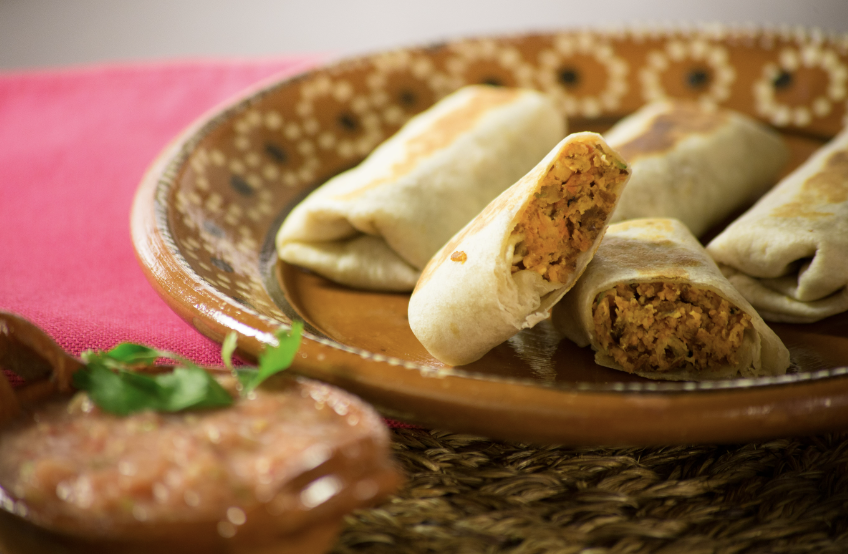
Maria Rosa Castillo, another Choyera member of a longstanding family from Todos Santos now living in San José del Cabo, brought Birria which is one of the most traditional dishes in her family. A rich beef stew made with guajillo and pasilla peppers that is commonly served in traditional celebrations like birthdays, quinceañeras and weddings. The choyero food birria is cooked in a thick broth and is traditionally served with refried beans, that Maria Rosa cooks with shortening and a touch of chipotle. In a move that veers from the traditional recipe that uses lard and chorizo. This, says Maria Rosa, is her way of adapting the traditional recipe to suit the taste of new clients who tend to look for lighter versions of regional food.
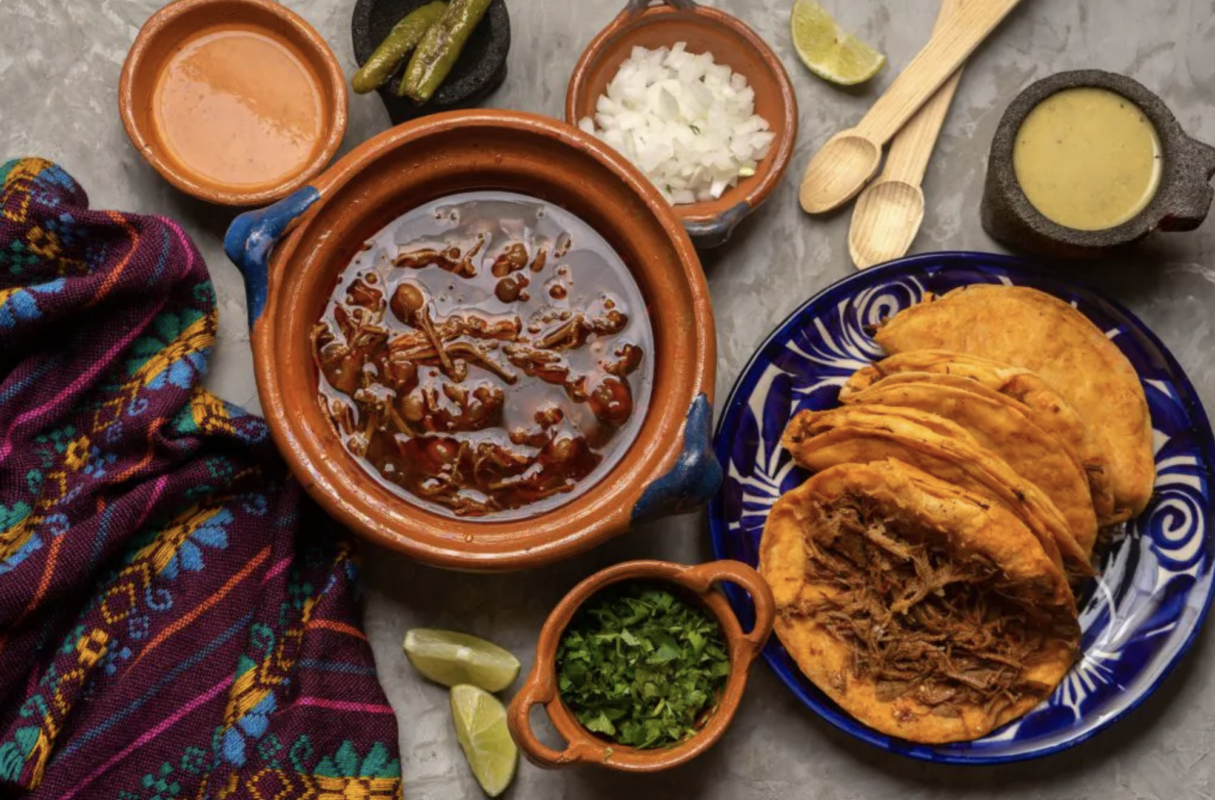
The Real Choyero Food
Whenever you talk about choyero food, the one dish all will mention is Sopa Fresca and this is the one dish you cannot find at any restaurant. The details of how it is prepared vary depending on the cook, but the one ingredient that is a must is the “sopa” which is similar to pasta, picture large flour tortillas that are stretched, cut and put to dry. The dough is cut into strips, triangles or squares, and varies in thickness depending on who is making it. The sauce is made with broth, tomato and “chile colorado” either guajillo, pasilla or a combination of both, and it can be thicker or runnier depending on the preference of the family serving it. A traditional recipe will always include a can of “Salsa Del Pato”, which has been a staple in all choyero pantries for a long time. The sopa is cooked, as you would pasta, and put in the sauce. The dish is served topped with olives, raisins and shredded Queso Fresco, which is fresh cheese, usually from Miraflores. You could say that once you have been asked to have some Sopa Fresca with a local family you have become an honorary “Choyero”.
An extraordinary opportunity to sample authentic regional food is the “Sabor a Cabo Rural” gastronomic festival that always highlights regional dishes and often includes collaborations of regional cooks with established chefs from well-known restaurants.
The food of this region is as vast as its territory and the tales that surround it are fascinating. Join me in an exploration of the gastronomic landscape of Baja California Sur. In the next issue of Destino I will introduce you to delicious and little known traditional desserts and make sure to catch the online content with more on regional food.

About the Author:
Claudia Velo is the proud winner of the first ever Food Critic award from Los Cabos Culinary Awards. Claudia lives life one delicious bite at a time for her; food is the best representation of unconditional love and cooking for others is the ultimate act of kindness. She is constantly searching for new experiences and moments to savor at tables where stories and flavors create indelible memories. Her reviews are honest opinions that aim to encourage others to explore the pleasures of enjoying food beyond the search for mere sustenance.
Claudia’s favorite quote is: Nothing would be more tiresome than eating and drinking if God had not made them a pleasure as well as a necessity. – Voltaire
